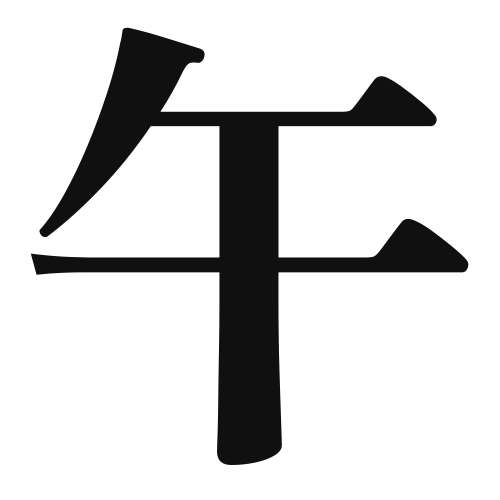1. Overview of Meaning
The kanji “午” (pronounced “go” or “uma”) primarily means “noon” or “midday.” It is also associated with the horse in the context of the Chinese zodiac, representing the seventh sign in the twelve-year cycle.
2. Formation and Radical
The kanji “午” is classified as a pictogram, originally depicting a horse. Over time, it has evolved into its current form. The radical for “午” is also “午,” which is used in various kanji related to time and the zodiac.
3. Examples of Usage
Common words and phrases that include “午” are:
- 午前 (gozen) – meaning “morning” or “before noon.”
- 午後 (gogo) – meaning “afternoon” or “after noon.”
- 午年 (gonen) – meaning “Year of the Horse.”
Example sentences in daily conversation:
- 今日は午前中に会議があります。 (Kyou wa gozenchuu ni kaigi ga arimasu.) – “There is a meeting this morning.”
- 午後は友達と遊びます。 (Gogo wa tomodachi to asobimasu.) – “I will hang out with my friends in the afternoon.”
4. Synonyms and Antonyms
Similar kanji with related meanings include:
- 時 (toki) – meaning “time,” which is broader and not limited to noon.
- 昼 (hiru) – meaning “daytime,” which refers to the period of light but does not specify noon.
Antonyms include:
- 夜 (yoru) – meaning “night,” which is the opposite of daytime.
5. Cultural and Historical Background
The kanji “午” has significant ties to Japanese culture, particularly in relation to the zodiac. The Year of the Horse is celebrated, and people born in this year are believed to possess certain characteristics, such as being energetic and free-spirited.
Proverbs and idiomatic expressions involving “午” include:
- 午前零時 (gozen reiji) – meaning “midnight,” which literally translates to “zero hours after noon.”
This reflects the importance of time in Japanese culture, where punctuality and the understanding of time are highly valued.
